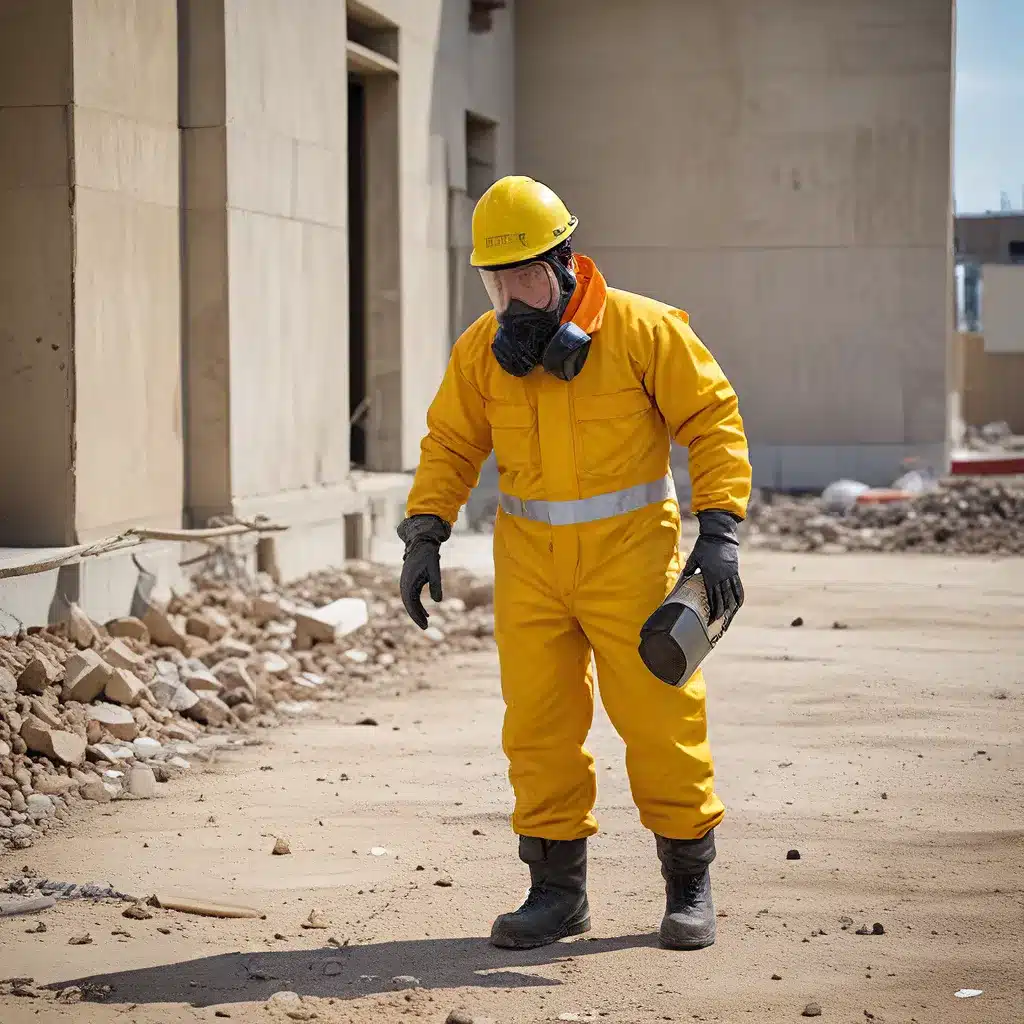As a professional cleaning services provider, I’ve seen my fair share of construction sites – both the good and the bad. One of the most critical, yet often overlooked, aspects of construction site safety is the proper handling and disposal of hazardous materials. It’s a topic that can make even the toughest of us squeamish, but it’s an absolute necessity to ensure the wellbeing of workers and the surrounding community.
The Dangers of Hazardous Materials
Construction sites are a veritable minefield of potential hazards, and hazardous materials are among the most dangerous. These substances can range from asbestos and lead-based paints to highly corrosive chemicals and flammable solvents. Exposure to these materials can lead to a host of health issues, from respiratory problems and skin irritations to more serious conditions like cancer and neurological damage.
OSHA regulations are in place to help mitigate these risks, but it’s up to construction companies and cleaning crews to ensure strict compliance. Failing to do so can result in hefty fines, not to mention the potential for catastrophic accidents and lawsuits.
Navigating the Regulatory Landscape
The regulations surrounding hazardous materials removal can be a veritable maze, but it’s crucial that we understand and adhere to them. California’s Hazardous Waste Operations and Emergency Response (HAZWOPER) standard, for example, outlines detailed training and certification requirements for workers handling these materials.
But it’s not just the workers who need to be informed – construction site managers and cleaning crews must also be well-versed in the applicable laws and best practices. This includes proper containment, labeling, and disposal protocols, as well as the use of appropriate personal protective equipment (PPE).
The Cleaning Crew’s Role
As a professional cleaning services provider, I understand the importance of my team’s role in maintaining construction site safety. We’re often the last line of defense against the lingering hazards left behind after the main construction work is complete.
My crew undergoes rigorous training to ensure they can identify and safely handle a wide range of hazardous materials. They’re equipped with the latest PPE, from heavy-duty gloves and face masks to specialized decontamination suits. And they follow a strict, multi-step process for containing, transporting, and disposing of these dangerous substances.
But it’s not just about the technical know-how – it’s also about the mindset. My team approaches every job with a heightened sense of caution and vigilance. They know that a single misstep could have devastating consequences, not just for themselves, but for the entire site and surrounding community.
The Importance of Collaboration
Keeping a construction site safe from hazardous materials is a collaborative effort, and it’s essential that all stakeholders – from the construction company to the cleaning crew to the local authorities – work together seamlessly.
Regular communication, thorough documentation, and clearly defined roles and responsibilities are key. We need to be on the same page about everything, from the types of hazardous materials present to the appropriate disposal methods.
At Adam Cleaning, we pride ourselves on our ability to forge these crucial partnerships. We’ve built a reputation for being a trusted, reliable partner in the construction industry, and we’re always striving to raise the bar when it comes to hazardous materials removal and site safety.
The Future of Hazardous Materials Removal
As technology and research continue to advance, I’m hopeful that the future will bring even more effective and efficient ways to tackle the hazardous materials challenge. Perhaps we’ll see the development of new, less toxic materials that can be used in construction. Or maybe AI-powered detection systems will help us identify and contain these threats more quickly and accurately.
Of course, there’s still a lot of uncertainty around these emerging solutions. Hazardous materials removal is a complex and ever-evolving field, and it’s likely that we’ll continue to face new challenges and debates as the industry progresses.
But one thing is certain: the safety and wellbeing of workers, communities, and the environment will always be the top priority. As a cleaning services provider, I’m committed to staying at the forefront of this critical issue, and to doing my part in making construction sites safer for all.







